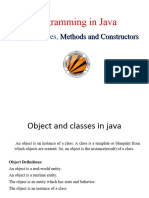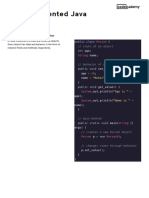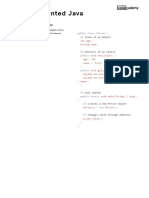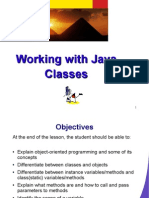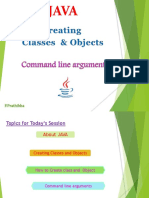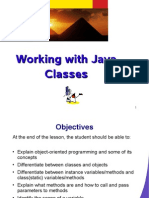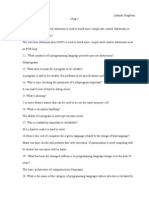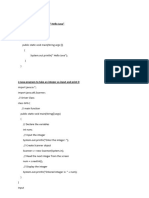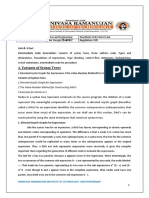0% found this document useful (0 votes)
50 views35 pagesMethods, Classes, Object Instantiation
The document provides an overview of classes, methods, objects, and object instantiation in Java, highlighting key concepts such as encapsulation, inheritance, and method overloading. It explains the structure of classes, the types of methods, and the process of creating and initializing objects. Additionally, it includes examples and best practices for using these OOP principles effectively.
Uploaded by
bharathkandhan96Copyright
© © All Rights Reserved
We take content rights seriously. If you suspect this is your content, claim it here.
Available Formats
Download as PPTX, PDF, TXT or read online on Scribd
0% found this document useful (0 votes)
50 views35 pagesMethods, Classes, Object Instantiation
The document provides an overview of classes, methods, objects, and object instantiation in Java, highlighting key concepts such as encapsulation, inheritance, and method overloading. It explains the structure of classes, the types of methods, and the process of creating and initializing objects. Additionally, it includes examples and best practices for using these OOP principles effectively.
Uploaded by
bharathkandhan96Copyright
© © All Rights Reserved
We take content rights seriously. If you suspect this is your content, claim it here.
Available Formats
Download as PPTX, PDF, TXT or read online on Scribd
/ 35





